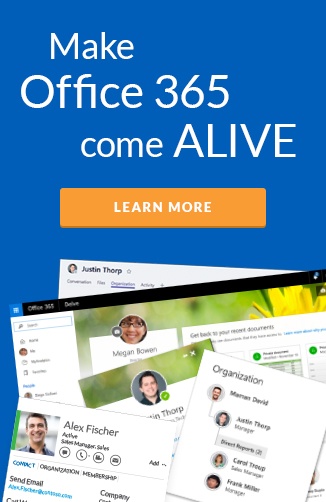SharePoint has been around since 2001. Document collaboration in SharePoint has been its major success.
Simplest form
In its simplest form, a user creates a new document, writes up content and then distributes it. An extra phase would be a review phase, where editors add review comments and/or make inline edits.
It wasn’t that long ago that documents were stored on a local hard drive or on a network file server. A lot of users still work this way. Some of the issues with these approaches are:
local hard drive
- Losing your laptop or hard drive failure means you lose your work
- No easy way to allow for a review phase, as users don’t have access
- If employees leave the organization, you have lost the documents
network file servers
- Only available inside your firewall
- Confusion from complex folder structures and security permissions maintained by many owners
Both of these approaches suffer from no standardized way to handle document versioning. This leads to rogue file naming with minor/major version numbering.
Another bad habit of these two approaches is e-mail attachments. Users send a document to many recipients in an e-mail. They then receive many versions of the document back and have the complex tasks of trying to merge them into one.
The main value of document management is that a document has one central source of the truth.
Why SharePoint?
SharePoint set out to fix this problem with Document Libraries back in 2001. SharePoint matches the experience of the file system. It had the concept of documents within hierarchical folders.
A SharePoint document library can be part of a SharePoint team site. It can also stand alone as a personal OneDrive for Business, provided to all Office 365 users. More recently with Office 365 Groups, each group also gets one. There are slight differences of each, which will be discussed in a follow up post focused on SharePoint document libraries in a few weeks .
Central source
SharePoint is a web platform accessed via a web browser. Each document has its own (albeit too long and confusing) URL. When you want users to review your document, you simple provide them the URL in e-mail, not an attachment. Everyone then works off the same document.
Document Sync
The killer feature of SharePoint has been the sync feature. This gives users the ability to sync documents to their local hard drive. This means that they don’t have to change the way they are use to working with documents. The sync feature has not been reliable for many years now. But recent updates have fixed this.
Chris Johnson talked about this with me on the Hyperfish podcast last week.
The main challenge of working locally via sync is that all the added benefits of SharePoint over file system cannot be used. For instance, there is no views, no versioning, no metadata, no content types, and no workflow. For those things, you have to access the web interface. This encourages users to stick to their bad habits. It also drives document management champions crazy as they try and enforce metadata over folders.
 Document Collaboration at your fingertips (Photo sourced from Biels)
Document Collaboration at your fingertips (Photo sourced from Biels)
Underused features
In most cases, SharePoint’s document management functionality is under used. This is often blamed on the poor user experience. SharePoint tends to hide things in site settings and list settings pages. These two key navigation icons have moved around the UI at every major 3 year launch for the last 15 years.
Here are a few of the things you should be aware of so you can get the most out of OneDrive for Business:
Security
The SharePoint team site owner can grant permissions to users. This can be set at a site, library, folder, or individual document level. This has often been the area that confuses users.
Not being confident about who has access can lead to users accidentally having access to documents they shouldn’t. This did happen on file shares too; but typically not everyone had permissions to do this. The power of search in Office 365 has exposed a lot of these mistakes too in commonly used user interfaces like Delve.
Users can grant permissions to Active Directory groups and members are not visible in the interface. The check names feature helped users to confirm whether an individual had access.
The “share” functionality has made this easier. This is available in the web browser and Office apps. You can grant “read” or “write” access to an individual document with a few clicks.
Views
Custom views allow users to provide filters much like a custom report. For example:
- a “unpublished/drafts” view that lists all documents that have not been published as a major version
- a “policy documents” view that lists all documents that are of content type “Policy”
From within the document library, you can change the view. You can also add a web part to a page and select that view. This is great for dashboards.
Delve
Delve was introduced into Office 365 a few years ago now. There is a follow up post on this coming, but in short, Delve allows you to see all documents that your peers, managers, and other colleagues are contributing to. Delve only works if everyone is using document libraries in Office 365.
I see many organizations not taking advantage of this powerful way of discovering content. This is often a great way to flag that content is not shared appropriately and that people are intentionally or unintentionally hiding documents by making the security permissions very narrow.
SharePoint Home
The SharePoint Home page in Office 365 was the first indication that “SharePoint is back” after fears the brand was being retired. This page gives a great view of all the SharePoint sites that you are a contributor to and those that you specifically follow. It also lists the recent documents for that site.
SharePoint Mobile App
The SharePoint mobile app was launched in 2016 as a new focus for SharePoint. The app essentially takes a similar view to SharePoint home in a browser, but “puts it in your pocket”.
OneDrive Mobile App
The OneDrive mobile app allows you to take your documents on the go. No need to be copying documents to USB sticks or e-mailing them to yourself anymore. It will even show you the recently edited documents across all the devices you use OneDrive on. This means being able to switch devices and continue where you left off.
Co-authoring
Long before real-time co-authoring support was available, users could edit documents. Users added review comments and made inline edits. Co-authoring allows multiple users to be working on a document at once. Each can see the contributions in real-time. This is now available in both the desktop apps and web interface.
Outlook attachment integration
In Outlook, the attach feature now supports selecting a recently used OneDrive for Business document and embedding it into the e-mail. This saves you switching context and going back to the document library to find the sharing URL.
Areas to watch out for
Workflow
SharePoint Designer took a hiatus after the 2010 major version launch. It got some spit and polish in 2013 and a new logo in 2016. There has been a clear indication that Microsoft Flow is the future of workflow for document libraries but it is still early days. For example, you cannot trigger a review workflow by selecting it in the document view. Workflows can only be triggered on a document creation, which is extremely limiting, as most created documents are blank. Replacing a very feature rich product with an inferior product that is owned by another engineering (Azure) team personally raises a lot of red flags on how quickly this will get to replacing the SharePoint Designer feature set.
Content Types
Content types is another area that has not seen much improvement since SharePoint 2010. This is the cornerstone of records management. The original features are very powerful, but there are areas of it that limit it. I hope in the near future, there is more focus on improved document templating, workflow, retention policies, and much more aligned around content types.
Local vs. Online opened
If you launch a document from the document library web page and open it in the desktop app, the behavior is quite different from opening it from your synced local hard drive. On both Windows and macOS, the context to the online file is not available when you open from the local drive. You will also notice that the share functionality does not work or the ability to get the online URL from the File pane.
Wrap Up
Document management in SharePoint (and OneDrive for Business) is what made SharePoint in the first place. It has continued to be its place in the market, in spite of it trying to be many other things along the way. It is great to see SharePoint going back to focusing hard on its successes.

